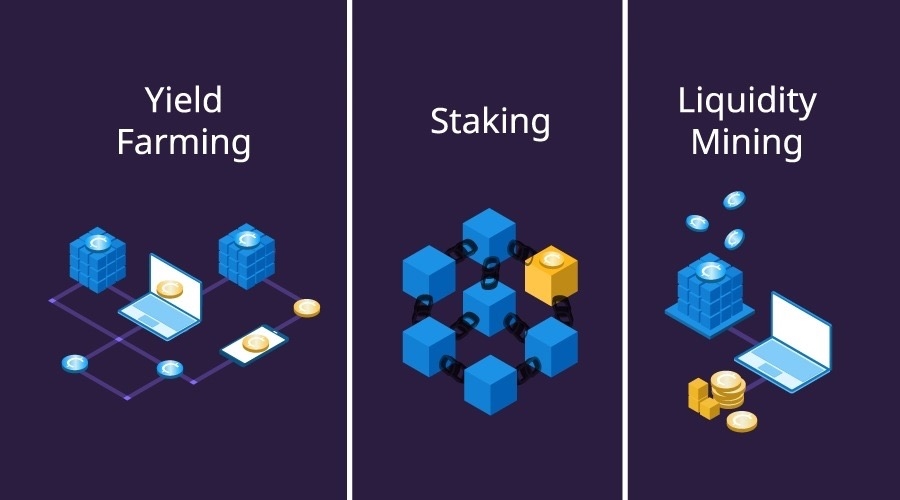Over the last five years cryptocurrencies have exploded at an unprecedented rate, but so have the different methods of making income in the cryptocurrency world. No longer do investors have to simply rely on trading to make a profit from crypto.
Now, crypto enthusiasts can contribute to blockchains through PoS (Proof of Stake), provide liquidity to pools, and extract the best possible yields through farming. The possibilities are almost endless and ever-expanding for investors wanting both passive and active income-generating activities.
With such great returns available to be made in the cryptocurrency world, analyzing the opportunity cost of each option is the best way to find a route that suits you.
Let’s discuss the differences between Yield Farming, Staking and Liquidity Mining.
Yield farming is the act of generating rewards such as interest and cryptocurrency by staking assets on dApps through a DeFi platform. The cryptocurrency is locked up for a certain period of time and acts as liquidity for lending, borrowing and trading.
Automatic Market Makers (AMMs)
A key concept for yield farming is AMMs, which liquidity pools are essential for, where many yield farmers staked cryptocurrency is stored in. Automatic market makers allow automatic and permissionless trading for their users, instead of traditional buyers and sellers systems, used in centralized exchanges.
Liquidity mining is a form of yield farming and another DeFi lending protocol, where users will stake their cryptocurrency into a pool to be used by other users. Liquidity mining rewards are focused on receiving coins from the platform they are ‘lending’ on, hedging their bets that their value will increase in the future.
Like any liquidity pool, providers are rewarded based on the amount of the liquidity pool they provided for.
Although staking, yield farming and liquidity mining can often be used interchangeably, there are some key differences. Staking is often seen as the simplest of the three and the most accessible to the average crypto enthusiast.
Staking is the act of locking up your cryptocurrency for a defined or undefined period of time to obtain rewards, usually interest.
Most staking protocols come with specific lock-up rules to ensure liquidity is confirmed for a certain period of time. Staking…
























